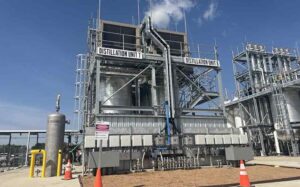Chemists develop refrigerant capture molecule
14th November 2014
USA: A team of chemistry researchers at the University of Houston claim to have developed a molecule that could capture fluorinated refrigerants.
The team has developed a molecule that self-assembles into a lightweight structure with microscopic pores capable of binding large quantities of several potent greenhouse gases to the tune of 75% by weight.
Ognjen Miljanić, a UH associate professor of chemistry and leader of the team, said. “This molecule could be used to capture Freons from disposed refrigeration systems, for example, or to concentrate them prior to analysis of their content.”
In a recent paper in Nature Communications, Miljanić and his colleagues report that a small molecule based on an extensively fluorinated backbone will form a structure with extremely small pores about 1.6 nanometers in diameter. Members of the team included Miljanić and professors Allan Jacobson and Olafs Daugulis, all from UH’s Department of Chemistry in the College of Natural Sciences and Mathematics.
“These tiny pores are lined with fluorine atoms, giving them a high affinity for other molecules containing fluorine – such as fluorocarbons and Freons,” Miljanić said.
Porous materials with similar pore sizes have been developed in previous studies, but those materials were often heavy, because of the presence of metals, as well as sensitive to water and difficult to process and recycle.
“The advantages of the current material is that it is stable to water and composed from individual molecules held together only by weak interactions,” Miljanić said. “This latter feature makes this material lightweight, because there are no metal connectors.”
The weak interactions between the molecules can be broken when needed, so the molecule can be recycled or deposited on a surface. The molecule is stable to 280ºC.







